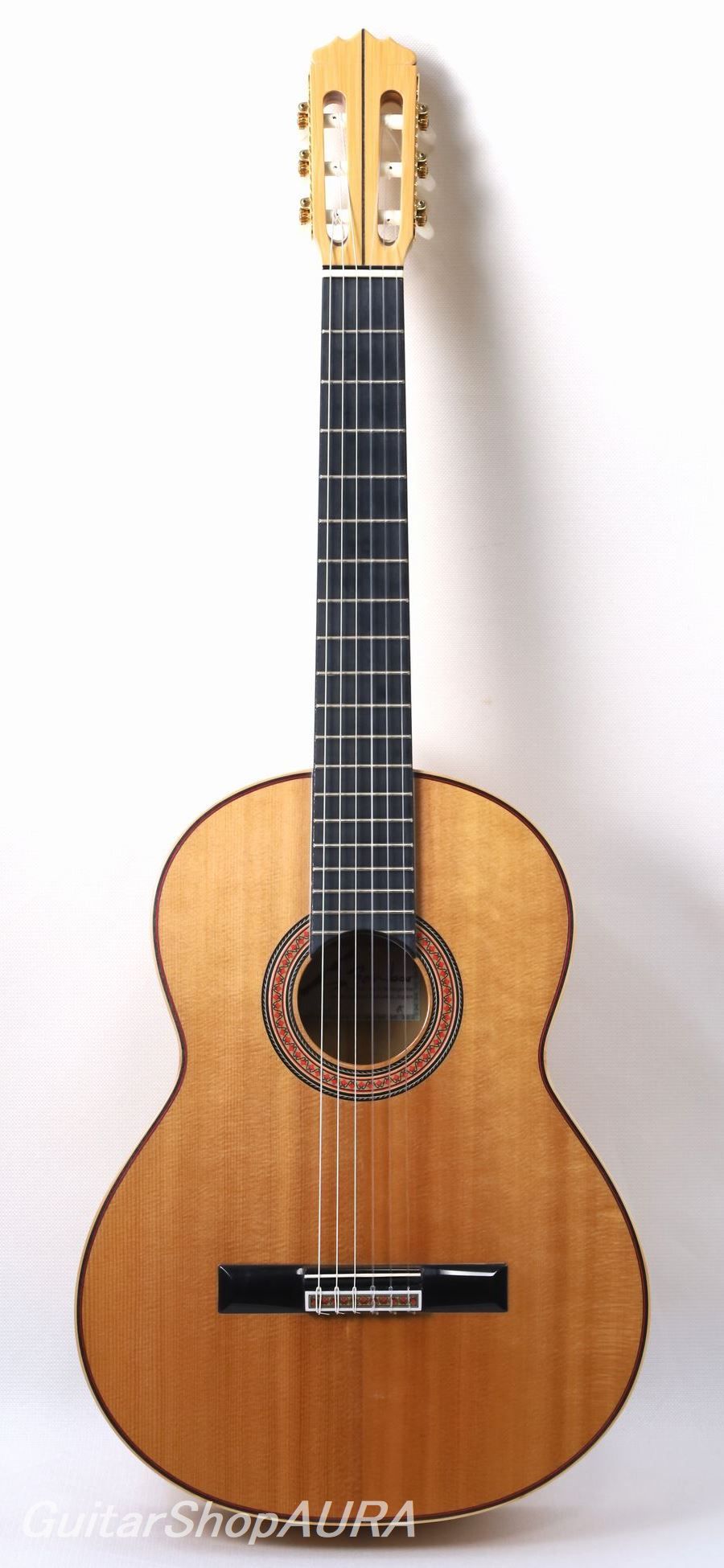
| Instrument | Osamu Nakayama |
| Category | Japanese Classical Guitars 〔Used〕 |
| Number/Model | Bamboo Guitar |
| Scale length | 650mm |
| Country | Japan |
| Year | 2009Year |
| Top | Solid Spruce |
| Side&Back | Bamboo |
| Condition※ | 9 |
| List price | INQUIRE |
| Price (tax included) | Please Inquire |
| option | with Lightweight Semi Hardcase |
Click to enlarge the photos below
Neck: Moso bamboo
Fingerboard: Ebony
Finish(Top): Polyurethane
Finish(Back & Sides): Polyurethane
Tuning Machines: GOTOH
String Height(1st): 3.0mm
String Height(6th): 4.2mm
[Profile]
He was born in Akita Prefecture in 1941 and grew up in Niigata Prefecture. He began playing classical guitar in junior high school and went to Tokyo to study with Yasumasa Obara. 1960 he went to Spain to study with Narciso Yepes. He was inspired by a local guitar maker who criticized his own domestic guitars, and decided to study guitar making in Spain, where the guitars were made. His mentor, Yepes, introduced him to the workshop of Jose Ramirez III, which was then in the midst of its prosperity, and he spent nine years playing by day and training at night in a guitar workshop.
After returning to Japan, he set up his own workshop in Nagano, and his fame and reputation grew as his models were used by Yepes, but in 1979, at the age of 38, an accident injured both of his hands, and he gave up both playing and making guitars completely in deep despair. He moved to Kurume, Kyushu, and worked as a woodworker, but a 'bamboo guitar' that appeared in his dream became an inspiration, and in 2000, 21 years after he quit making guitars, he decided to make a classical guitar again, this time using local bamboo. After three years of trial and error, he finally produced his first guitar, which had never been made before. As Nakayama continued to make improvements, he began to receive more and more attention and acclaim from users, and the only bamboo guitar in the world literally became popular as the flagship model of the Osamu Nakayama brand.
According to Nakayama's own explanation, the bamboo used for the Bamboo Guitar is exclusively Moso bamboo from Kurume City, Fukuoka Prefecture, where his workshop is located. The bamboo is slowly dried in the sun for six months, then cut into thin strips and laminated into more than 80 sheets of 9 cm thick plywood, which is then processed into the guitar's various parts. The meticulous workmanship that went into making this guitar is impressive, both in terms of construction and acoustics. At the same time, the deep respect for Spanish guitars, which is his origin as a guitar maker, can be felt in his work, which is very appealing and has formed a dedicated fan base.
[Description]
Osamu Nakayama's Bamboo Guitar made in 2009 is now in stock. The sound board is made of spruce, and the back and sides are made of moso bamboo. The wild visual of bamboo is sure to catch everyone's attention. The sound board is made of spruce with a slightly candy-colored vintage look, which creates a strange contrast with the bamboo.
The combination of spruce and bamboo produces a very clean acoustic, with a hard, crisp sound that spreads evenly from bass to treble, giving a flat impression unlike the robust sound of Spanish guitars. The dry sound characteristic of bamboo wood and the Ramirez-like expression are mysteriously combined to create a unique tone. The neck is also made of Moso bamboo. The strings are soft, which reduces playing stress for both hands.